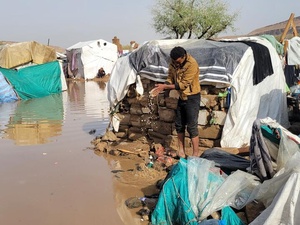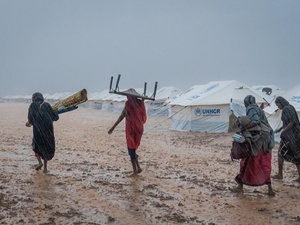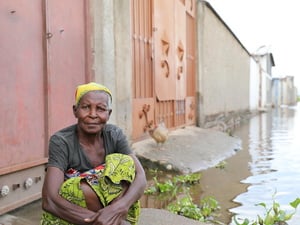15,000 Somalis seek asylum in region since beginning of year
15,000 Somalis seek asylum in region since beginning of year
Rising numbers of Somali refugees are now seeking asylum in neighbouring countries to escape the increasingly volatile situation in many parts of their homeland, particularly in Mogadishu. Since the beginning of the year, some 15,000 Somalis have sought asylum in Kenya, Djibouti, Ethiopia and - even further afield - in eastern Sudan.
These numbers are in addition to the tens of thousands who have fled internally - mainly from strife-torn Mogadishu to internal displacement sites in outlying districts. An estimated 64,000 people have fled their homes in the capital since the beginning of the year - an average of about 20,000 a month. By the end of 2007, aid agencies estimated that more than 1 million people were displaced inside Somalia - some 700,000 of them pushed out of Mogadishu over a 10-month period alone in 2007.
Growing numbers of asylum seekers and migrants are now making their way to Djibouti, raising fears that the tiny horn of Africa nation could become the alternative migration route for Somalis looking for better opportunities in the Middle East. Since the beginning of the year, more than 2,000 Somali asylum seekers and migrants have entered Djibouti - compared to a total of 700 who went there in 2007. Each day, more than 100 Somalis cross into Djibouti from Somaliland through the Loyada border crossing. Along the northern coast of Djibouti, some 200 Somali migrants are intercepted each week as they attempt to make their way to Yemen. Those who are intercepted are detained in an old jail in the remote port city of Obock. The jail, built to hold 20 detainees, now holds more than 200 people at a time. In addition, local authorities have scarce resources to care for the detainees. According to UNHCR staff who visited Obock recently, detainees are served their meals in flimsy plastic bags as there are no utensils.
In Djibouti city, large numbers of refugees jam offices of the government department charged with the registration of asylum seekers. The government is unable to offer accommodation to those waiting for registration - a wait that can take days. Once registered, they are transferred to Ali Adeh - a camp of some 7,000 mainly Somali refugees - where we provide assistance.
Kenya has received nearly 8,000 Somali asylum seekers - the largest number in the region so far this year. The asylum seekers have entered the country through various border crossings, making their way directly to the Dadaab refugee camps which currently host some 184,000 mainly Somali refugees. Last week, the government re-opened a transit centre at the border town of Liboi, where officials have begun screening new refugees. The government closed the transit centre in January 2007 along with its common border with Somalia at the height of an offensive by Ethiopian troops against the Islamic Courts Union (ICU). UNHCR has begun transferring asylum seekers from Liboi to the Dadaab camps.
In Ethiopia, this year, nearly 4,000 new Somali asylum seekers have arrived in the eastern town of Jijiga through Somaliland. This is in addition to some 8,500 new Somali asylum seekers who arrived in the area during 2007. An old camp, Teferi Ber, with a capacity for some 10,000 people which was re-opened in July 2007, is now almost full. A new site is being sought to cater for thousands of new refugees currently waiting for registration in Jijiga.
Meanwhile, in Sudan, since January, some 1,300 Somalis have sought asylum in the east of the country - six times more than the whole of last year. The majority of them are single young men and women fleeing the fragile Somali capital. Sudan's Commission for Refugees and UNHCR are transferring the new arrivals to Shagarab camp for assistance. Some of the refugees have, however, moved on to the Sudanese capital, Khartoum, or to other northern African countries - probable staging posts for eventually crossing into Europe.








